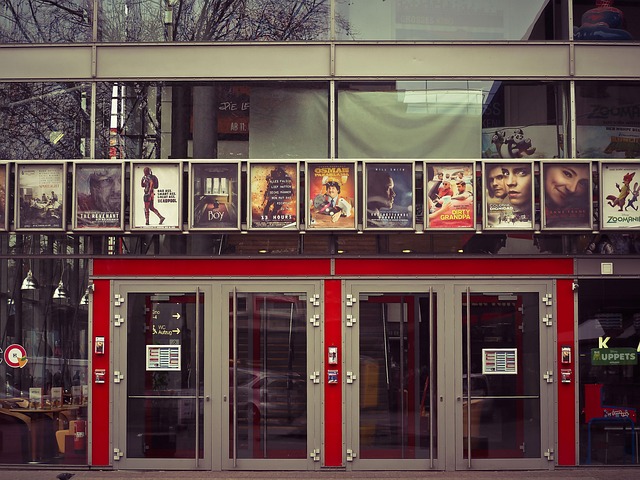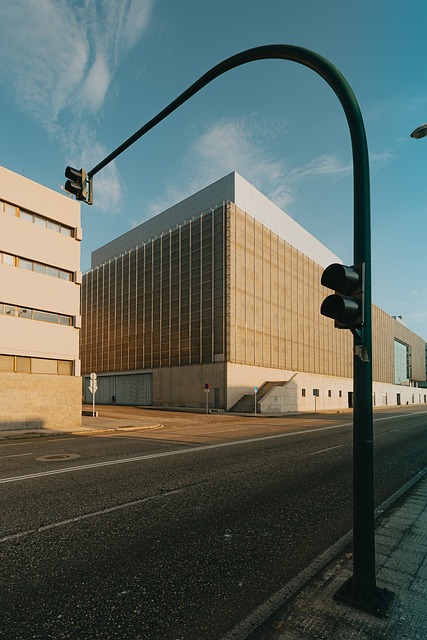Movies about casinos in Las Vegas, nicknamed "Sin City," offer a captivating blend of allure and danger, showcasing its neon lights, grand casinos, and extravagant shows. These films explore both the glamorous surface and darker themes like gambling addiction and moral decay, reflecting society's complex relationship with excess and escapism. With its unique contrast between desert landscapes and luxurious resorts, Las Vegas remains a popular cinematic location for diverse narrative styles, drawing audiences seeking visual stunning narratives.
“Las Vegas, with its neon lights, grandeur, and allure, has long captivated filmmakers. Known as ‘Sin City’, it serves as a captivating backdrop for movies, offering a unique blend of excess and danger. From classic films like Fear and Loathing in Las Vegas to modern day, movies about casinos have used this setting to explore themes of fear, paranoia, and escapism. This article delves into the allure and dangers depicted on screen, examines central themes of mental turmoil, and analyzes the movie’s lasting cultural impact on our perception of Vegas, as well as its influence on the trip/adventure film genre.”
- The Allure and Dangers of Las Vegas in Movies
- – A brief overview of why Las Vegas is a popular setting for movies
- – Historical significance of Las Vegas in cinema
The Allure and Dangers of Las Vegas in Movies

Las Vegas, often dubbed “Sin City,” has been a captivating subject in countless movies, drawing viewers into its allure and dangers. These cinematic portrayals showcase the glitz and glamour of casinos, neon lights, and extravagant shows, tempting audiences with promises of excitement and fortune. Movies about casinos present a world where anything seems possible, from winning life-changing jackpots to experiencing unparalleled hedonism.
However, beneath the surface, these films also explore the darker side of Las Vegas—gambling addiction, moral decay, and the high-stakes world of crime. They capture the vulnerability of characters entangled in a web of deception and excess, often leading to devastating consequences. Through these narratives, audiences are both enticed and warned, experiencing a unique blend of fascination and fear that defines the allure and dangers of Las Vegas as depicted in movies about casinos.
– A brief overview of why Las Vegas is a popular setting for movies

Las Vegas, often dubbed “Sin City,” has long been a captivating setting for movies, drawing audiences with its glitz, glamour, and inherent drama. The city’s neon lights, grandiose casinos, and vibrant nightlife create an iconic backdrop that appeals to filmmakers looking to explore themes of excess, hedonism, and the human condition. Movies about casinos tap into this allure, often delving into the dark underbelly of Las Vegas while showcasing its dazzling surface.
The popularity of Las Vegas as a cinematic location can be attributed to several factors. Its unique blend of luxury and decadence provides an intriguing contrast, making it a versatile setting for various narrative styles. Moreover, the city’s reputation as a place of escape and indulgence resonates with viewers, offering a glimpse into a world where anything seems possible. This, coupled with its rich history and cultural significance, ensures that Las Vegas continues to be a sought-after destination for filmmakers crafting movies about casinos and their attendant narratives.
– Historical significance of Las Vegas in cinema

Las Vegas, known for its glitz and glamour, has long been a captivating setting in cinema, reflecting society’s fascination with excess and escapism. The city’s iconic strip, with its towering hotels and bright lights, has served as a backdrop for countless movies, solidifying its place in popular culture. Movies about casinos, such as Fear and Loathing in Las Vegas, capture the essence of this unique urban landscape, where reality blends with fantasy. The film, based on Hunter S. Thompson’s novel, is a cult classic that explores the hedonistic and surreal aspects of Vegas, becoming an iconic representation of the city’s allure and mysteries.
The historical significance of Las Vegas in cinema goes beyond mere entertainment value; it has influenced storytelling techniques and pushed creative boundaries. These movies often delve into themes of obsession, greed, and the American Dream, mirroring society’s complex relationship with gambling, luxury, and the pursuit of pleasure. The city’s contrasting landscapes—from the desert to the extravagant resorts—provide a rich visual narrative, making Las Vegas a popular choice for filmmakers seeking visually stunning and thought-provoking stories.
“Las Vegas, as a cinematic landscape, continues to captivate audiences in movies about casinos. Its allure and dangers, masterfully portrayed on screen, have left an indelible mark on popular culture. From classic films like Fear and Loathing in Las Vegas to modern offerings, the Strip’s glittering facade and underbelly serve as a rich tapestry for storytelling. Understanding the historical significance of Las Vegas in cinema enriches our appreciation for these narratives, solidifying its place as a pivotal setting in movie history.”






